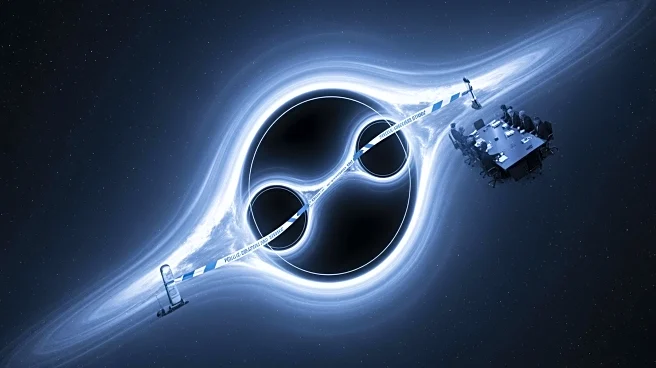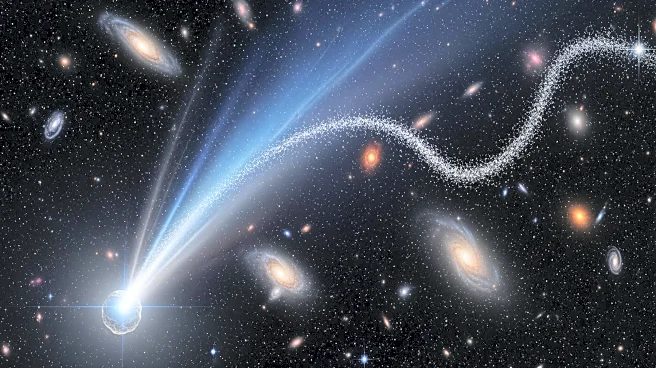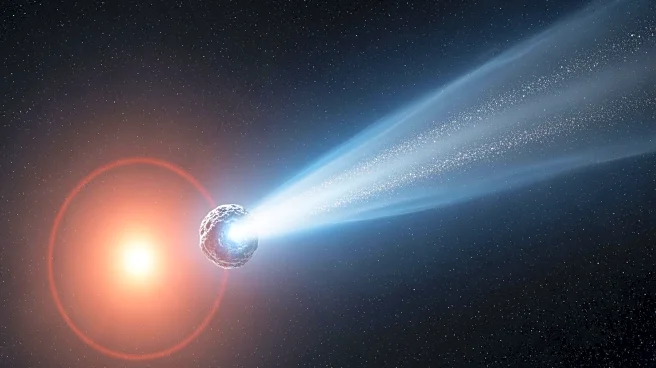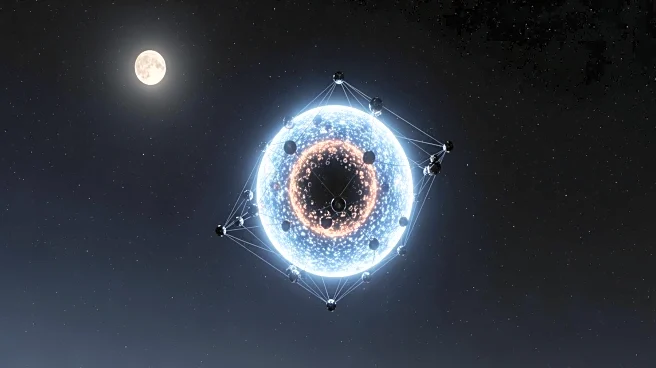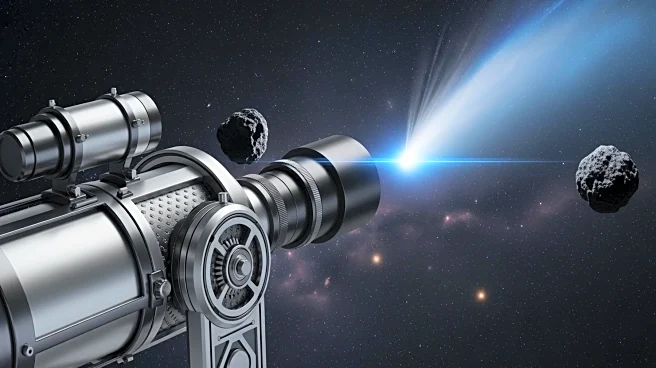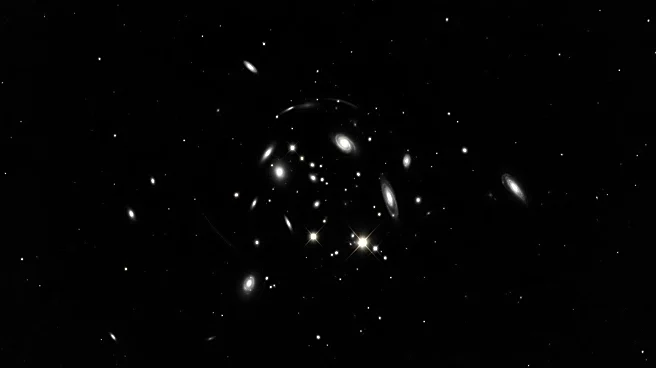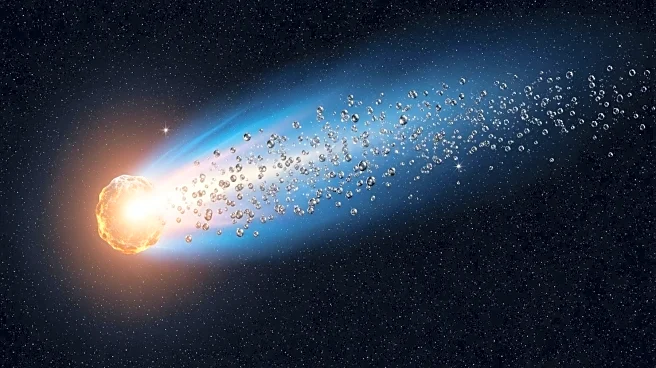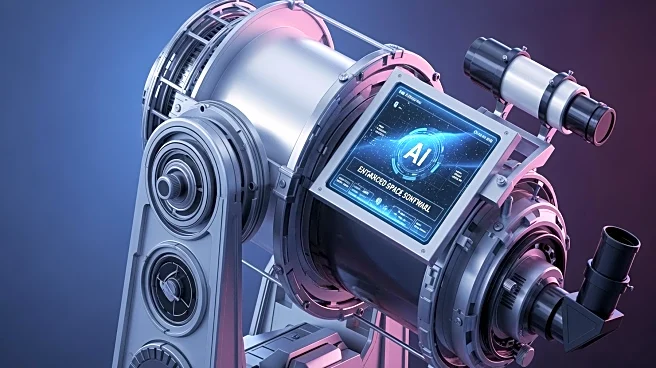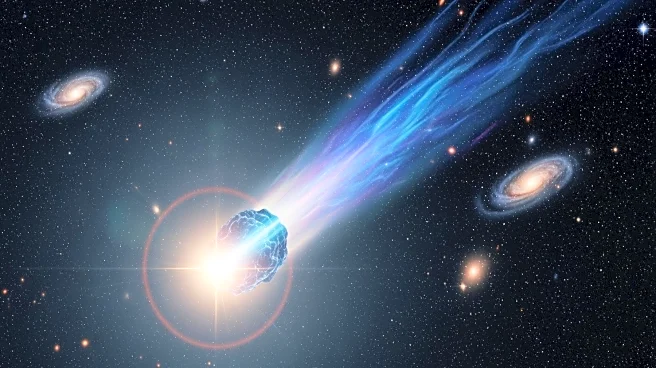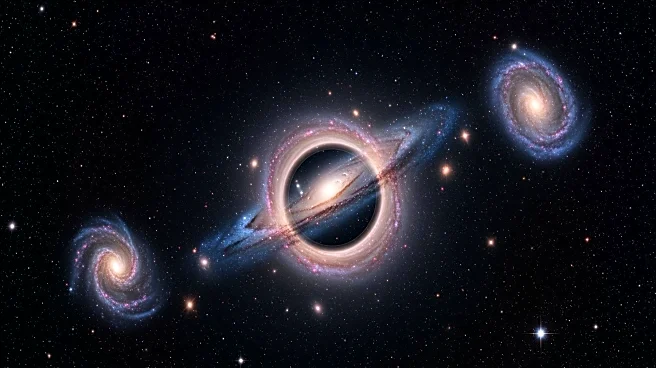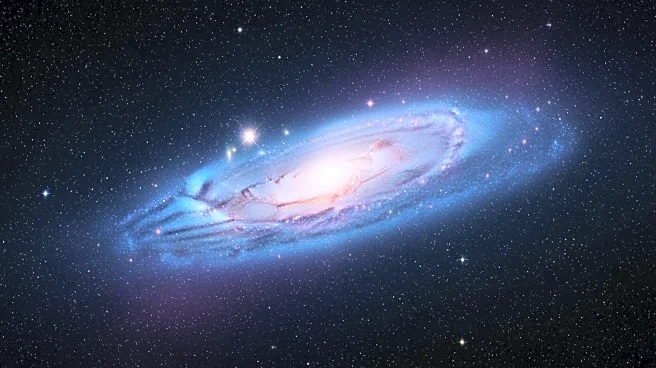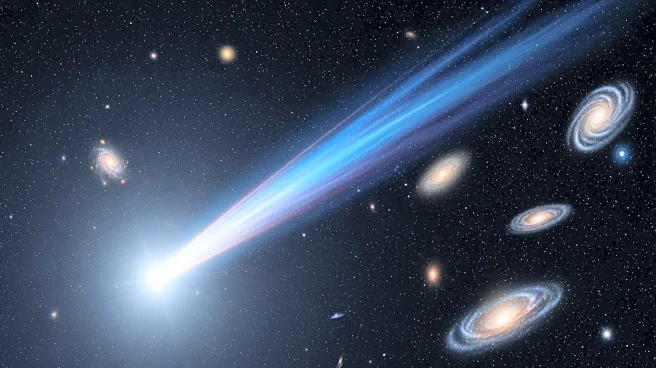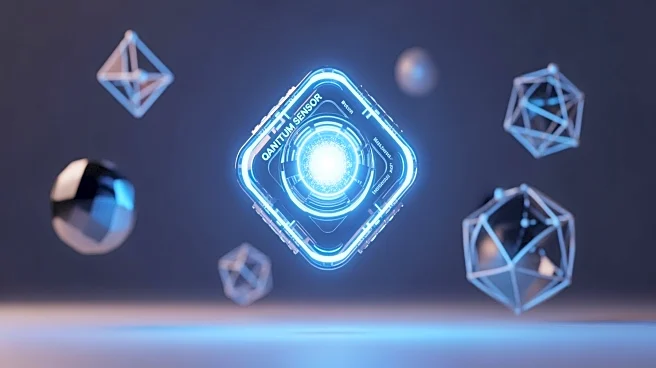What's Happening?
Scientists have detected two unique black hole mergers through gravitational waves, revealing new insights into cosmic events. The LIGO, Virgo, and KAGRA detectors registered the first merger, GW241011, involving black holes with masses of 17 and 7 times
that of the sun, occurring 700 million light-years away. The second merger, GW241110, involved black holes with masses of 16 and 8 times the sun's mass, 2.4 billion light-years away. Notably, one black hole was spinning opposite to its orbit, a first for merging binary black holes.
Why It's Important?
These detections are significant as they provide direct evidence of second-generation black holes, formed from previous mergers. The findings offer a unique opportunity to test the limits of general relativity and explore the fundamental laws of physics. The rapid rotation of the black holes allows scientists to probe the existence of ultralight bosons, potentially impacting particle physics. Understanding these cosmic events enhances our knowledge of black hole formation and the dynamics of the universe.
What's Next?
The LIGO-Virgo-KAGRA collaboration plans to continue improving detector sensitivities to explore more black hole mergers. Future observations aim to deepen understanding of hierarchical mergers and their role in cosmic evolution. Scientists will use these events to test theories beyond general relativity, potentially leading to groundbreaking discoveries in astrophysics and particle physics.
Beyond the Headlines
The study of black hole mergers has profound implications for our understanding of the universe's structure and the fundamental forces governing it. These discoveries challenge existing theories and open new avenues for research, influencing future scientific exploration and technological advancements.
